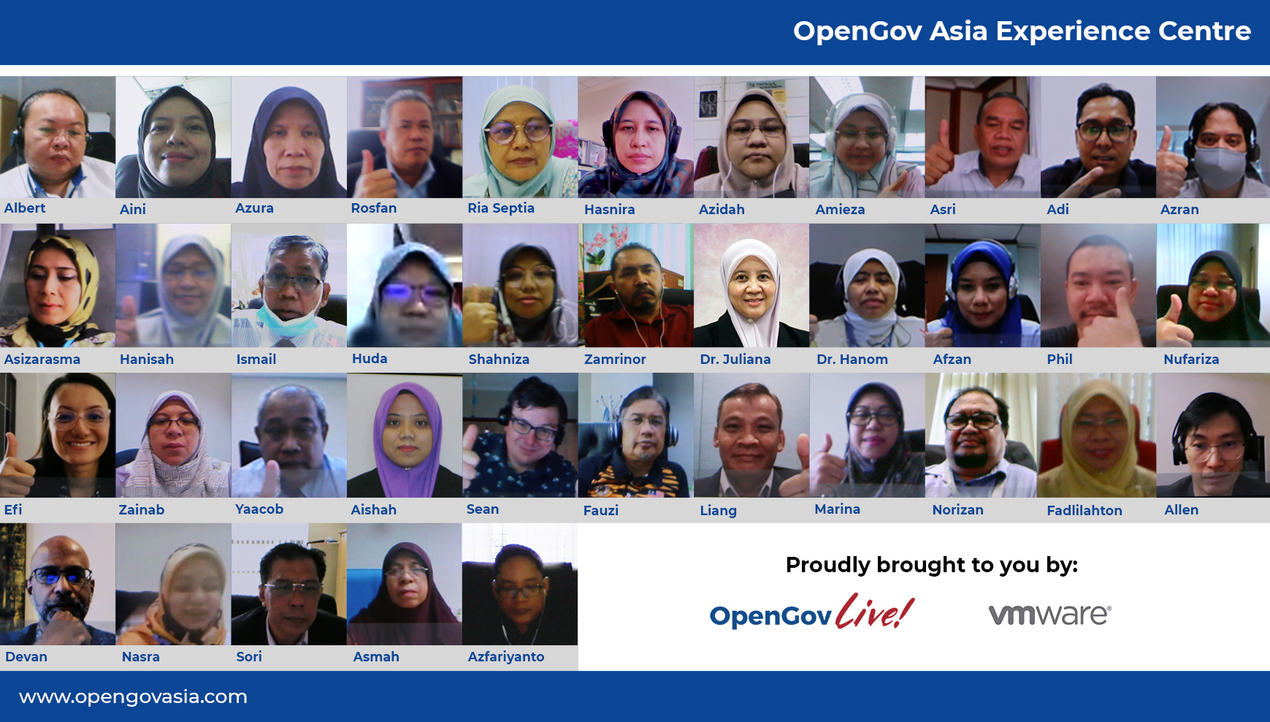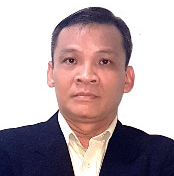
Around the world, government agencies are working hard to meet citizen needs and weather the impact of COVID-19. The new normal is driving the public sector to accelerate digital transformation initiatives to ensure that the citizens continue to avail of government services uninterrupted and seamlessly.
While this transformation encompasses people, processes and technology, it is the underlying technology that forms a foundation for a successful initiative. A big part of this shift is modernising the on-premises IT environments and applications that span data centres, edge locations, and public clouds.
In a fast-changing business environment, governments have displayed the value technology brings to enable a connected and innovative ecosystem. While organisations in 2020 were focused on responding and adapting to the pandemic to ensure business continuity, 2021 marks a turning point with innovation becoming a priority for future-ready agencies looking to accelerate their growth.
The Malaysia Digital Economy Blueprint (MyDigital) was announced earlier this year to boost the growth of the cloud industry by adopting a cloud-first strategy in the public sector and appointing Cloud Service Providers (CSP) and Manage Service Providers (MSP) to build Malaysia’s capabilities in this area. With this cloud-first strategy, the government can engage in more effective data collection and management, resulting in lower information management costs overall. In the first phase (2021-2022) of the blueprint, the government aims to move towards a paperless environment and migrate 80% of public data to hybrid cloud systems by the end of 2022.
With government agencies taking the lead on digital transformation the adoption of new cloud technologies, how would agencies and businesses on the ground implement these policies?
The prevailing challenge is to shift towards a comprehensive approach that enables organisations to deliver superior digital experiences across any cloud, any application, and any device, seamlessly and securely; this will become a critical success factor in Malaysia’s rapidly digitalising business environment.
This was the focal point of the OpenGovLive! Virtual Breakfast Insight held on 9 November 2021. This session aimed at imparting knowledge and strategies on how to unlock the multi-cloud future to accelerate digital transformation and deliver secured citizen-centric services with agility, scalability, and speed.
Translating government-led digital transformation plans into practice

Mohit Sagar, Group Managing Director and Editor-in-Chief, OpenGov Asia, kicked off the session with his opening address.
“A document does not make a country smart,” he opines. “The key lies in the drive, learning, implementation and execution of policies on the ground.”
Cloud technology is transforming businesses across industries, forcing a paradigm shift by delivering hosted services through the internet with huge cost benefits and business innovation. It has changed the way data is accessed, stored, migrated and managed. Cloud provides high accessibility of information and enables the access of information remotely – a big plus in the context of the current global crisis.
Not to the left behind, the prevailing trend for governments is also a shift towards a hybrid cloud strategy to increase productivity. However, with this transformation, agencies will have to juggle hundreds or even thousands of applications – all of which are critical to business.
Against this backdrop, how can agencies modernise, re-platform, re-host and re-factor applications – transition from monolithic systems to agile, streamlined microservices? The answers involve small, scalable steps.
Two of the most significant trends in legacy app modernisation are multi-cloud and hybrid cloud. Modernisation helps software teams optimise existing applications for these more distributed computing paradigms, rather than requiring them to rebuild their critical applications from scratch.
At the same time, navigating this shifting terrain must be done securely – there is a need to bake security into the process and tools. This means that security is readily built into the infrastructure across workloads and applications. This is not an add-on product, tool, or bundle, but a concerted strategy for leveraging existing systems in new ways across applications, clouds, or devices. It is a unified approach to accelerate the identification, prevention, detection, and response to threats with the right context and insight.
Agencies are not only moving workloads between on-premise data centres and public cloud but are also making a change by uploading data instantly.
Ultimately, Mohit is convinced of the flexibility that the Cloud offers in responding to changes demanded by digital citizens. These services have proven to be responsive and have been able to operate remotely and serve their citizens, demonstrating agility, scalability, and speed even amid a pandemic. “Having happier citizens should be in our DNA,” Mohit asserted.
Challenges of implementing cloud technologies

Liang Chuen Woon, Staff Solutions Architect at VMware Malaysia, spoke next on the road ahead for governments in their transformation journeys. He opened with the question: What is a digital government?
The answer is one where citizens are placed at the centre. It involves digital citizen services, digital operations, and a digital workforce. With the cultural shift prompted by the pandemic, a digital government needs to provide a channel for citizens to engage with the government, automate policies and workload through digital operations, and transit to a digital workforce.
He identified 4 key challenges government agencies are currently facing:
- Increasing pressure to modernise
- Urgent need for mobile workplaces and services
- New citizen and new community expectations for digital services a
- Intensifying cyber threats
No doubt, other hurdles impeding the speed of digital transformation abound. He cited unsustainable legacy IT systems and apps, security concerns and the lack of time to market new services as some of the other factors affecting the transition to hybrid cloud.
The digital blueprint for the future is clear. Moreover, with the pandemic, the urgency for digital transformation has gained significant momentum. About 70% of Government IT Leaders believe their digital transformation plans have gained speed and will accelerate due to the pandemic. Based on a survey, more than half of the government agencies agreed that they would shift their workload to the public cloud.
This begs the question: With the increased complexity of government IT, how can agencies safely accelerate modernisation efforts to meet new citizen and mission demands?
VMware offers a Cloud-agnostic platform for digital transformation that provides the ability to easily move workload between different clouds and applications. This means that agencies do not need to be locked into a single public cloud. It is also a single, flexible platform that allows agencies to continue to leverage the agencies’ existing knowledge and process. Furthermore, VMware offers a simple path to acquisition through the breadth of partners and contracts.
Liang concludes by emphasising that a hybrid-cloud model offers the “power of choice” and “cloud freedom” because agencies would not need to lock themselves down to a particular cloud platform–there is consistency in infrastructure, operations, and developer experience.
The current mission requires a citizen-centred, digital government. Digital transformation must be powered by an intelligent digital foundation that is secure and flexible. This will require empowering the workforce, digitalising operations and enhancing the overall citizen experience.
Wellington’s case study: Utilising cloud technologies to improve disaster response

Sean Audain, City Innovation Lead, Wellington City Council, New Zealand shared on Wellington’s venture into harnessing the hybrid cloud model to develop “Wellington’s Digital Twin.”
The strategy is helping the city council operate in an “integrated, digital and human way to run.” It allows leaders to understand how the cloud gathers information on what is going on in the city, analyse what is happening and turn that information into actionable insights.
Sean elaborated on the management of data related to disaster response. In Wellington, people live on one of the world’s most active fault lines. Understanding how the city moves is frequent earthquakes and with the sense monitors, agencies can swiftly monitor and assess what happens and get alerts quickly.
With the multi-cloud architecture, data flows from sensors from private companies, data merchants from different local governments to the City Twin Cloud Instance and fused to provide insights. This management of data is applied to the collection of information from sense monitors. As a result, the time needed to inspect the large buildings have been reduced from 3 days to 1 day, saving billions that would have been lost per day.
The edge that hybrid-cloud systems offer is the ability to interact across technology types and organisations and being able to pass the information on to officials and citizens quickly. It provides an overall situational awareness of the city.
The shift to a hybrid cloud system was primarily for resilience, he pointed out. It stemmed from the realisation that while it is difficult to defend the data centre, it is easier to defend links to the internet and data centres in other jurisdictions.
During the pandemic, the city council was also able to run up dashboards efficiently and “combine information” across NGOs working on the ground. With the infrastructure, agencies can care more about data than needing to worry about the infrastructure.
He concludes that the hybrid cloud architecture puts the city council in the position to collaborate and interact with the citizen. While the city council was previously preoccupied with “developing a way to shout data,” they are currently “developing a way to listen more properly.” The speed, agility and seamlessness of the technology have allowed the city council to interact with their citizens in a “human” way rather than a “mechanical” way.
Interactive Discussion
After the informative presentations, delegates participated in interactive discussions facilitated by polling questions. This activity is designed to provide live-audience interaction, promote engagement, hear real-life experiences and facilitate discussions that impart professional learning and development for participants.
The first question asked delegates what their top IT priority over the next 12 months is. The majority (35%) indicated that security and governance is their top priority while about a quarter (23%) felt that modernising the data centre was their priority.
On the current state of public cloud adoption, more than half (57%) indicated that they are still evaluating, while 22% expressed that they have no current plans and 17% have some workloads in multiple clouds.
When asked about the driver of cloud adoption, 53% of the delegates indicated that data centre extension or the ability to scale capacity on demand was the focus. Votes were equally split among the delegates for the migration of apps to Cloud and disaster recovery. About 11% expressed that the regulatory mandate was the motivation.
The next poll inquired about delegates key concerns when considering the move to the Cloud. More than half (57%) indicated that Security and Governance is the main concern. The remaining delegates were divided between concerns about operational cost (23%), re-skilling talent (10%) and environment lock-in (10%).
For most of the delegates (42%), their ideal cloud environment is being able to migrate workloads to the cloud easily and seamlessly. Others were split between being able to manage applications consistently (21%) and keeping apps secure (21%). The remaining 16% expressed that being able to move apps from cloud to cloud easily would be ideal.
When asked about the current state of Kubernetes/Containers used in their organisations, 66% indicated that more information is needed. Deployment is still at its infancy, a session for another time for sure.
Conclusion
Closing the session, Devan Parinpanayagam, Country Manager of VMware Malaysia thanked everyone and expressed his gratitude for the robust participation.
To cope with the rapid demands of a changing world, governments are making headway into technologies that can enable innovation and productivity for a distributed workforce and remote working. He firmly believes that “we will not go back to the way we were before,” and that multi-cloud is the backbone that will allow agencies to capitalise on the speed, scale and flexibility that cloud-based infrastructure can provide to the anywhere workspace.
Devan acknowledges that there is apprehension about moving to a hybrid cloud model but urged delegates to take rest assured in the fact that transition to a hybrid cloud is “a journey and not a destination.” The decision to move to the cloud is not about moving everything at one go. It happens selectively and in parts. The cloud journey is “back-and-forth” and never-ending. Calling to mind the imagery of a cloud factory, the journey is continuous and always fluid – agencies are in full control of the data and operations that go on the cloud. While everything is changing, organisations need a constant – the infrastructure. The imperative is to invest in a solid, transparent dependant and flexible infrastructure.
Before bringing the session to a close, Devan encouraged the delegates to reach out to him and the team to explore ways VMware could assist them on their cloud journey.

















